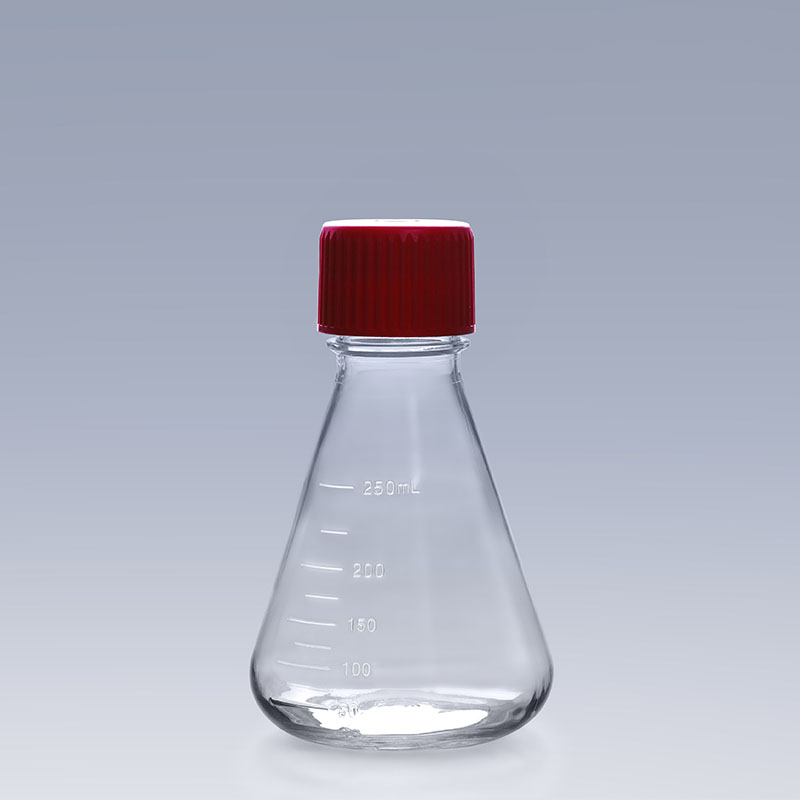cell culture shake flasks is an economical and practical cell culture tool that can fulfill a wide range of scientific research needs such as suspension cell culture, media preparation, mixing and storage. The commonly used materials for this cell culture container include PETG and PC, do you know what is the difference between these two materials?
First of all, in terms of specifications, these two materials are the same for cell culture shake flasks, and common specifications include 125ml/250ml/500ml/1000ml to meet the needs of different scales and scenarios of use. The cap is made of high-strength HDPE material with PTFE hydrophobic breathable membrane design, which does not affect the sealing and breathable effect of the breathable membrane after contacting with the liquid.

In terms of material performance, PC and PETG are two commonly used materials for cell culture containers, both of which have good transparency. The difference is that PETG material has better light transmittance, more stable performance in low-temperature environment, and better chemical resistance than PC material.PETG is more environmentally friendly, it belongs to the thermoplastic plastic, can be recycled, and can be molded again by reheating, unlike thermosetting plastics, which can't be recycled after one time of molding.The toughness and tensile performance of PC material is better, and the degree of high temperature tolerance is higher. Although it can withstand high temperatures, but the soaking of chemical reagents is likely to harm the plastic material, reducing its strength; and then high-temperature autoclave sterilization, is likely to lead to deformation of the cap and the bottle, so it is not recommended for secondary use.
Comprehensive view, PC and PETG two materials have their own advantages, the specific choice of which material cell culture shake flasks should be based on the specific purpose and use of the scene.
The FAI climbed 5.9 percent year-on-year in the first 11 months of 2018, quickening from the 5.7-percent growth in Jan-Oct, the National Bureau of Statistics (NBS) said Friday in an online statement.
The key indicator of investment, dubbed a major growth driver, hit the bottom in August and has since started to rebound steadily.
In the face of emerging economic challenges home and abroad, China has stepped up efforts to stabilize investment, in particular rolling out measures to motivate private investors and channel funds into infrastructure.
Friday's data showed private investment, accounting for more than 60 percent of the total FAI, expanded by a brisk 8.7 percent.
NBS spokesperson Mao Shengyong said funds into weak economic links registered rapid increases as investment in environmental protection and agriculture jumped 42 percent and 12.5 percent respectively, much faster than the average.
In breakdown, investment in high-tech and equipment manufacturing remained vigorous with 16.1-percent and 11.6-percent increases respectively in the first 11 months. Infrastructure investment gained 3.7 percent, staying flat. Investment in property development rose 9.7 percent, also unchanged.
 English
English


















































